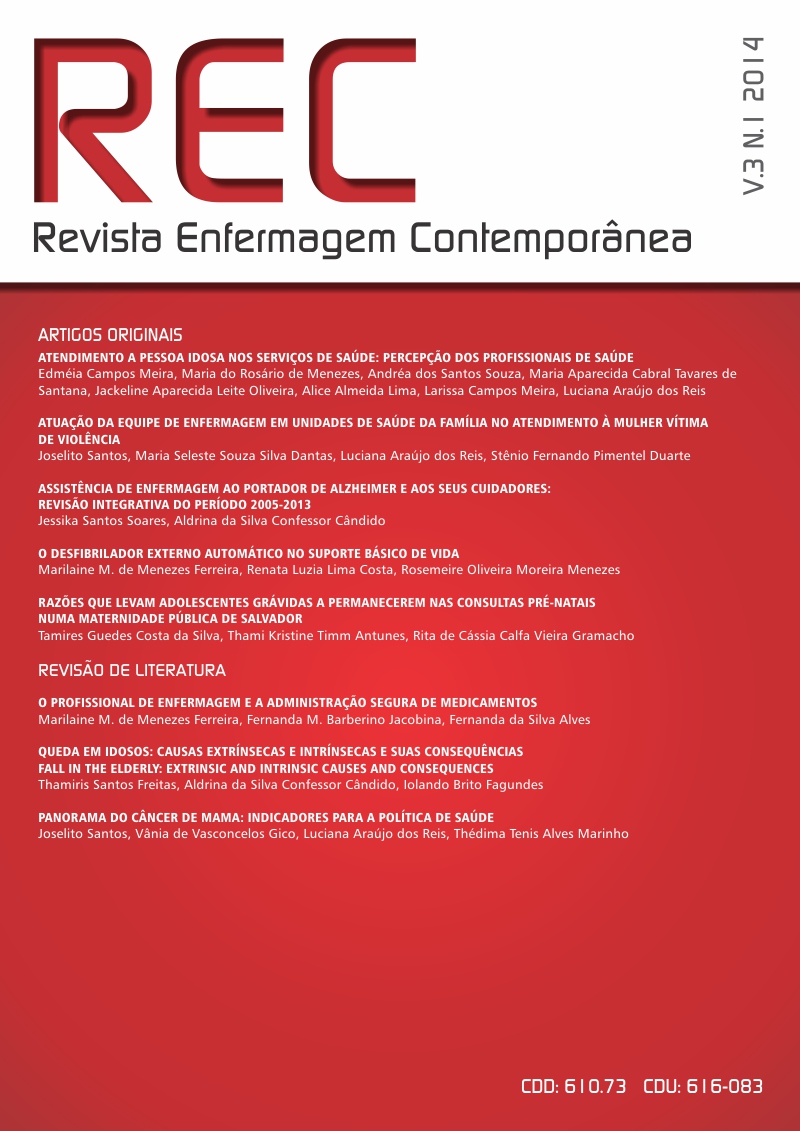THE AUTOMATIC EXTERNAL DEFIBRILLATOR IN BASIC LIFE SUPPORT
DOI:
https://doi.org/10.17267/2317-3378rec.v3i1.334Keywords:
Cardiac Arrest, Health Education, Electrical DefibrillationAbstract
The use of AEDs by laypersons in episodes occurred outside hospitals can save lives according to the time between cardiac arrest and defibrillation. In Brazil, the presence of DEA in environments of great public transit is required by municipal or district law. This study aims to evaluate the knowledge of employees of a private education institution of Salvador in which there is an AED available for use, as to its function and operation, as well as pointing out public locations where AED is available. This is a field study of exploratory and quantitative approach. 130 administrative staff participated in this research through a questionnaire. It was observed that 54.6 % of the participants know what an AED is. Of these, 54.6 % said they did not know how to identify public places where an AED is found and the remaining 45.4 % who claim to know, answered correctly (76.9 %). It was found that only 43.8 % say they have technical expertise, but 70.8 % would not make the first aid maneuvers and would only call the Emergency Service. 80 % said they did not know an AED, and only 9.1 % answered correctly the steps to use the AED. From the data obtained, it was observed the need for intervention by the institution to provide training in order to teach and exercise the knowledge and agility of its employees, contributing to effective conducts for reducing mortality rates by PCR, increasing the chances of survival of the possible victims that may occur in the presence of these professionals.



